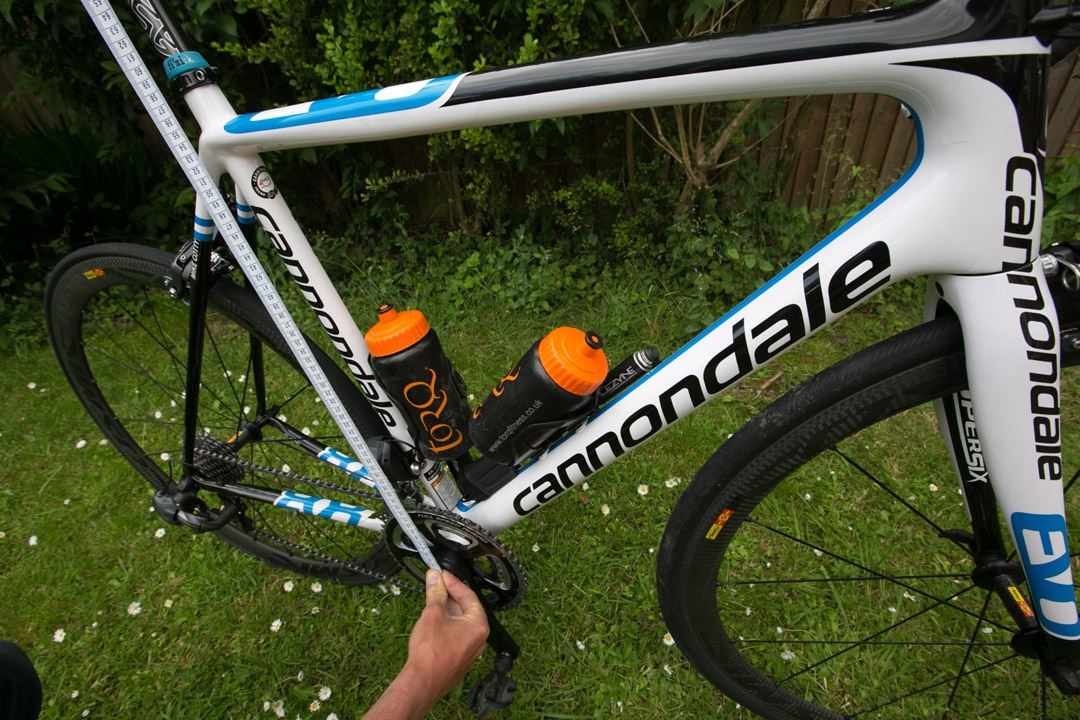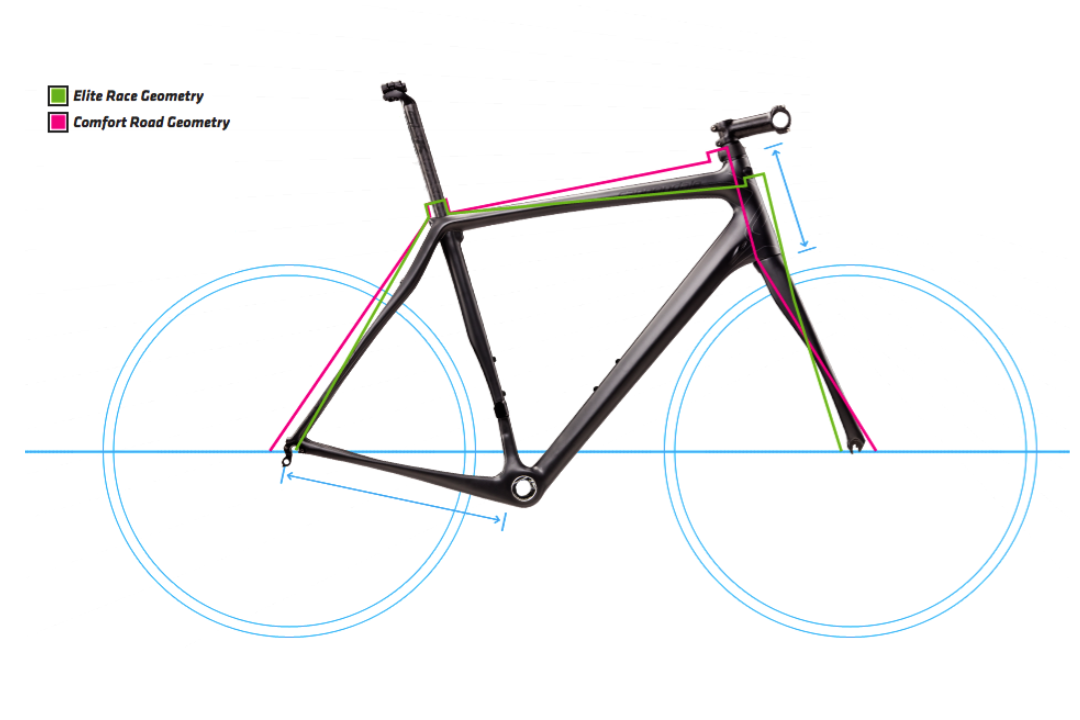Learn
- Cols //
- Cycling Tours //
- Learn //
- Ask the experts //
- Shop

Road Bike Geometry and What to Look For
How does frame geometry affect your ride?

Back in the day a road bike was characterised by having drop handlebars and a mountain bike had knobbly tyres, it was that simple, but over the years cycle sport has evolved to the point where bikes have become highly specialised depending on the intended use and exact rider needs. Ultimately this degree of specialisation starts with the rider at heart, with manufacturers designing, refining and carefully crafting frames and equipment that they hope will not only meet but clearly exceed the expectations of their customers to bring them the best cycling experience possible.
Being comfortable on a road bike is fundamental to being able to enjoy the sport and reach your potential as a rider, whether you’re an aspiring racer or a complete beginner I can’t stress enough how important it is that the fit of your bike is correct for your body. So what are the basics to look for I hear you ask?
Geometry
The first thing to consider is what you intend to use your bike for. Today most companies offer two types of frame geometry, one with a higher focus towards racing and another with a little more bias towards comfort for longer days in the saddle. This split in frame technology came about due to the massive up-rise in sportive, granfondo and multi-day events throughout the world. Professional racers are generally in the saddle for up to six hours at a time and they are working at very high intensities which forces them to ride in an aggressive position where every second counts. A little trade off in comfort for all out speed is of little concern, especially when they are on the massage table every night with the hands of god working the knots out of their muscles, a luxury that not many of us have available on a regular basis. It’s not uncommon for a weekend-warrior to spend many more hours in the saddle than the pros do at any one time, so frames with sportive geometry are now designed with this in mind and without compromise on the rider. Let’s have a look at the main differences.

Race specific: This type of frame typically has a longer toptube and shorter headtube, this allows the rider to get into a lower position when putting in maximum effort. A shorter wheelbase and slightly steeper head angle makes steering quick (almost edgy) so that the slightest rider input can take the bike off its line and in another direction.
Sportive specific: A shorter toptube and slightly taller headtube compared to a race specific frame allow the rider to sit in a more upright position, putting less stress on the lower back and promoting a higher degree of comfort. Longer chainstays make the rear triangle more vertically compliant, again to promote a higher degree of comfort by eliminating high frequency road vibrations that can cause rider fatigue after several hours. The overall wheelbase of the bike may be just a touch longer which makes the bike more stable and reassuring whilst the head angle is often slackened by half a degree to promote more predictable and confidence inspiring handling.
Don’t be fooled into thinking that a sportive bike is a lesser performing machine overall though, often this type of frame is used by the professionals during the harshest and hardest one day races on the calendar in the Belgium Classics like the Tour of Flanders and Paris-Roubaix.
Bike Fit
With the correct type of frame identified for your riding style it’s certainly a good idea to have a bike fit done so that you can ensure you not only get the right size frame but also every area of the bike is optimised for your body measurements including stem length, height, handlebar width and profile, saddle height / position and cleat alignment on your shoes to make sure your knees are tracking well and you’re in the best possible position that will put the least amount of undue stress on your body when cycling. If you’re buying a new bike and haven’t had a bike fit done before then it’s worth factoring in the cost of a fit session as you establish your budget. You can have the most expensive bike in the world but if it doesn’t fit you properly then you may run the risk of causing injury and there’s a very big chance you’re going to fall out of love with the sport as quickly as you fell in love with it.
We hope this gives you an insight into what to look for choosing the right frame geometry for your type of riding.
Learn more about Cannondale’s award winning EVO race bike and Synapse sportive bike.
For more help and advice why not ASK THE EXPERTS










